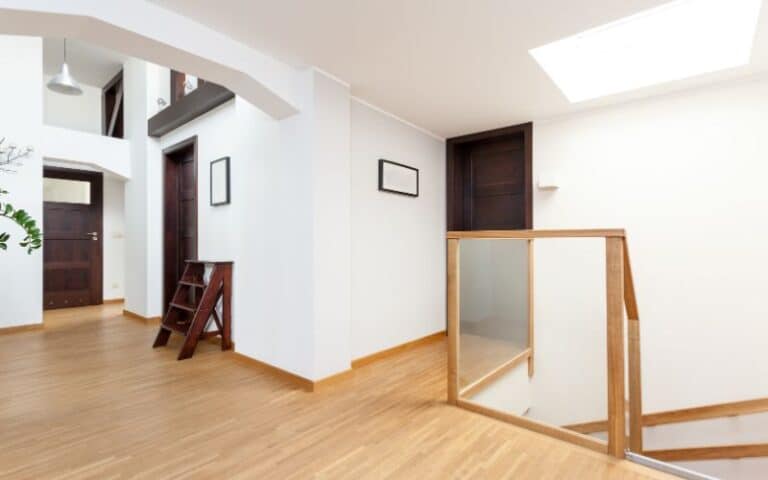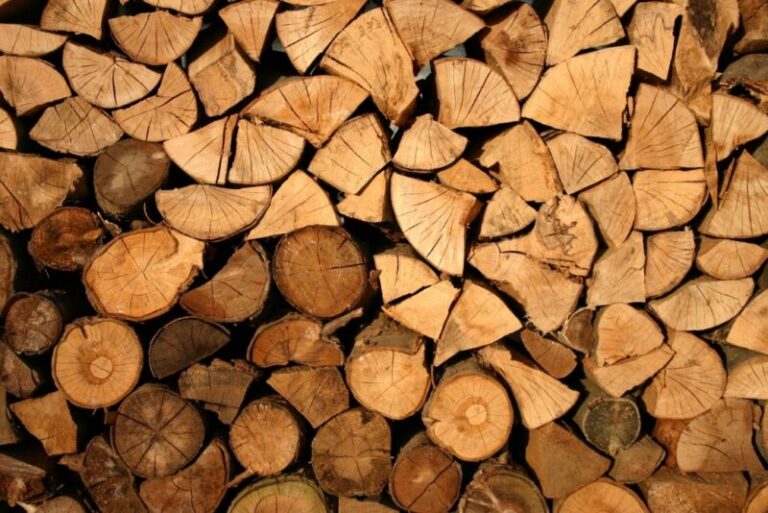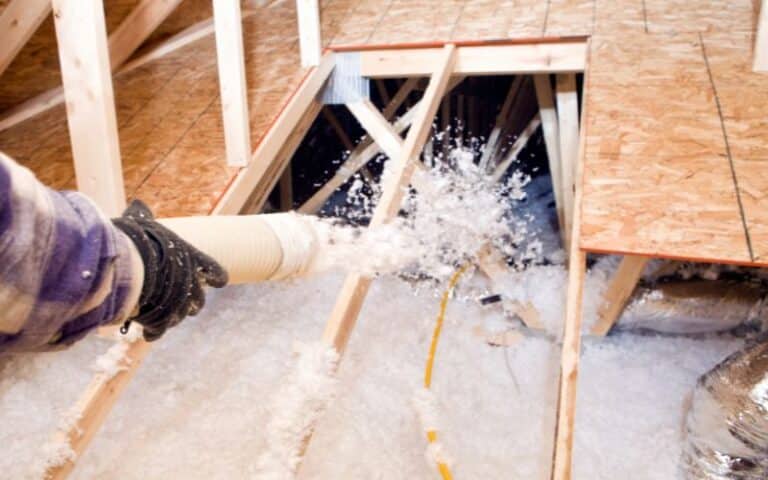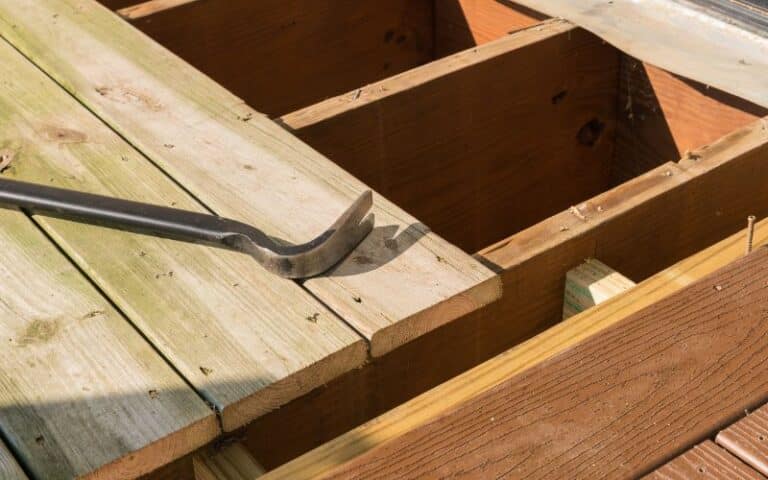Every house rest on a floor. Having perfect flooring not only adds to the beauty of the interior decoration, it also ensures that you stay healthy.
Seeing your subfloor take another color can be frightening. Worst of all, the color may not be pleasant. Black molds on subfloors can appear for several reasons.
When you notice black molds on the subfloor in your building, you should take action to remedy the situation.
Black molds are dark discolorations you may find on your subfloor. These discolorations are spores or spore-forming organisms that grow in dark and damp regions. When you notice black molds on your subfloor, it will be best to remove them immediately. These molds do not only damage the floor, but they are also harmful to your health.
In this article, you will find all you need to know about black molds and why they grow on subfloors.
You will also find tested and proven solutions for this problem and how to stay safe to clear the black molds.
Ready for a Flooring Quiz?
4 Reasons for Molds Appearing on Subfloors with Solutions

A mold is a type of microorganism that grows on many surfaces. This microorganism belongs to a class of living things called fungi.
These fungi grow and spread on surfaces when they come in contact with favorable conditions. These conditions are the reasons you can have fungi growth on your subfloor.
A subfloor is any material that provides extra strength and rigidity to your flooring. These materials could be made of wood or concrete.
The subfloor is sandwiched between the top layer and the lowermost layer. The subfloor provides the strength and the sturdiness you feel under your feet when you walk on the floor.
Here are four reasons why you may find mold on your subfloor:
- Material
- Moisture
- ventilation
- Treatment
#1. Material
The type of material your subfloor is made of can be a reason you have molds growing on the subfloor.
Most commonly, a subfloor is made from plywood. In other instances, you can have a subfloor covered with concrete.
Some construction techniques can make the subfloor of wood or cement board. In any case, the material is crucial in determining black mold growth.
Aside from supporting the growth of black molds, the materials could also aid the rapid spread of the black mold to other parts of the floor.
Solution
The solution to this problem is to use the least prone material to develop and propagate black mold.
That material is plywood. Most home construction workers have recommended that plywood is the best material for your subfloor.
#2. Moisture
When the subfloor is constantly exposed to moisture, black molds will grow and spread on the surface.
This moisture supplies nutrients to the fungal organism and, thus, supports their growth and increase on the subfloor’s surface.
When you notice the growth of black molds on the surface of subfloors, you can trace this growth to a damp floor region.
You will find black molds on your subfloor more frequently in places near the bathroom where water runs or in the basement.
You might also spot a black mold easily during the wet season due to the general wetness of the surrounding.
Solution
Always be on the lookout for wet areas in your house. Regularly lift the covering on the subfloor to expose these areas; it will be best to take quick action against it.
And if you have any leakages in pipes or the conduit system of your house, make sure you repair them on time.
Make sure you clean water that sips out of your home appliances. These appliances may include refrigerators, washing machines, and dishwashers.
#3. Ventilation
Aside from moisture, black molds can grow in areas with little or no ventilation. Most subfloors are covered with other materials above and below.
This sandwiched position naturally prevents air from going through the subfloor. This condition increases the growth of black molds on the subfloor.
When black molds develop due to heightened exposure to moisture, their growth is maintained due to a lack of ventilation.
During the wet seasons, moisture increases the growth of black molds. When the wet seasons are over, if you do not expose these surfaces to ventilation, the growth of black molds may persist.
Solution
Expose the subfloor periodically to allow for adequate ventilation.
#4. Treatment
When using wood as the subfloor material, you should treat the wood. A poorly treated material may attract black molds to your subfloor.
An untreated material lacks the substances that prevent the growth and propagation of black molds on your subfloor’s surface.
Any other material that does not come under any form of treatment will be susceptible to the growth of black mold.
Solution
Use only treated materials to make your subfloor. Most interior construction workers recommend treating plywood as the best material for subfloors.
Pressure-treated plywood remains the best subfloor material for your house’s moist and poorly ventilated regions.
The table below summarizes the causes of black mold on the subfloor and some simple solutions to these problems.
| Problems | Solutions |
|---|---|
| Material | Use the recommended materials for the subfloor |
| Moisture | Block all leakages Clean all leakages and spillage Ensure the drywall remains dry |
| Ventilation | Periodically expose the software for ventilation Allow for cross-ventilation in the room |
| Treatment | Use only well-treated plywood for subfloors |
How Can I Prevent Black Mold on My Subfloor?
Having black molds grow on your subfloor’s surface is a highly preventable occurrence.
So, here are some of the ways you can prevent the growth and propagation of black mold on the subfloor:
- Use the best materials
- Prevent moisture and leakages of water
- Regularly expose the subfloor surfaces
#1. Use The Best Materials
When you apply the best materials to construct your subfloor, you will least likely have black molds grow on them.
The best material in the construction of your subfloor is plywood. Construction workers recommend this material because it resists the growth of black mold.
Other materials may be strong or provide other qualities. These materials do not prevent the growth of black mold.
Even after you choose the plywood, you must modify it to make it truly resistant.
Treated plywood is far more resistant to the growth of black molds. Just picking the right material for your subfloor is a good preventive measure against the growth of black molds.
#2. Prevent Moisture and Leakages of Water
Moisture and humidity are major causes of the growth of black molds on your subfloor. Where ever you find prolonged exposure to moisture, you may find black molds growing.
This growth is due to moisture’s nutrients and warmth to the microorganisms. You are most likely to find black molds in constantly wet places.
These places include bathrooms, kitchens, and the basement. In these regions, moisture may be the sole cause of the formation of black mold.
To prevent black molds from forming, block all leakages from pipes and tunnels. Clean water spillages quickly and block water that sips and tracks from appliances.
#3. Regularly Expose the Subfloor Surfaces
Another common cause of black molds on surfaces is a lack of ventilation. When surfaces are exposed to air, they do not easily develop black molds.
When air is lacking, combined with other factors like moisture and inappropriate material, black molds grow.
The black molds persist and spread to other house regions when you do not expose the subfloor to enough ventilation.
To prevent black molds from forming due to lack of ventilation, you should expose the subfloor surface regularly to the atmosphere.
As part of a routine clean-up measure, you can create an avenue for cross ventilation while removing all the subfloor coverage.
In this way, the subfloor will be exposed to the atmosphere. This exposure greatly slows the organism’s growth, causing it to dry up.
Are Black Molds on Subfloor Dangerous?
Black molds on subfloors are dangerous; aside from altering the looks and damaging your flooring, they pose great health risks and hazards.
When you inhale the particles from black molds, you may come down with a range of illnesses that could be mild or moderate.
This sickness occurs because the fungus triggers an allergic reaction in your immune system. After inhaling particles of the black mold, the black mold produces some toxins.
The toxins are called mycotoxins and can be dangerous when they circulate in your body.
As a result of the circulation of these mycotoxins, you may begin to have symptoms of coughing, sneezing, nasal congestion, and irritated eyes.
Be sure to visit a doctor whenever you experience these symptoms after exposure to particles of black mold.
What Can I Use to Kill Black Mold in My Subfloor?
You can use some chemical substances to kill molded subfloors. When you apply these chemicals on the subfloor surfaces, they remove the black mold.
A common compound you can use to kill black mold on your subfloor is a mixture of borax and water.
When you apply this mixture on your subfloor, they react with the surface of the fungal agent and wipe them off the subfloor.
Borax is a salt of sodium that exists as a solid. It easily dissolves in water to form a basic solution. This compound is a strong base that can kill black mold on subfloors.
The solution kills the mold by making the environment inhabitable for the microorganism. It increases the pH levels of the environment.
Once the pH levels are elevated, the microorganisms die eventually. The effects are usually immediate.
You could also look for an environmental protection agency-recommended mold remover. There are several of them you can find in stores near you.
These substances work like the borax mixture. They may differ in efficiency. This difference is because borax penetrates the plywood and has a longer-term effect.
Most of the cleaning agents do not have this quality. Therefore, they do not remain effective for a long time.
Will The Chemicals Against Black Mold Affect My Flooring?
The chemicals you apply to remove the black molds from your subfloor do not affect your flooring.
No household owner has reported a change in their flooring after they applied a common mold-removing agent.
Flushing your floor with water after applying the borate compound would be best. Once you flush the floor with plenty of water, it removes the residue from the surface.
After you apply the borate compound, you should allow the compound to dry off by exposing the floor to the atmosphere for a while.
These measures cushion the adverse effects of these chemicals when you apply them to remove black molds from your subfloor.






